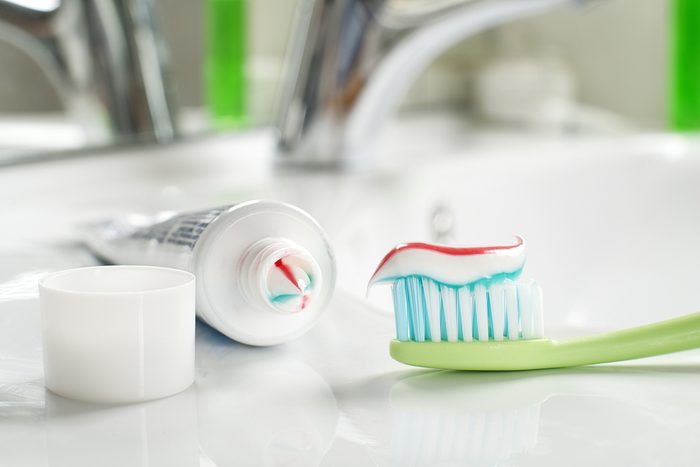
Dealing with the pain of sensitive teeth?
Tooth sensitivity can be a pain in the-well, in the mouth. Cold or hot foods and drinks, sugary sweets, even a cold wind against your teeth can make your pearly whites start throbbing or stinging.
In most cases, teeth are sensitive because their protective outer layers-enamel over the crown, or cementum over the root-have worn away. That exposes your tooth’s dentin, which is full of tiny tubes with sensitive nerve endings running through them.
Are you suffering from sensitive teeth? Try these six tips to help ease the pain.

1. Try toothpaste made for sensitive teeth
Several brands of toothpaste on the market are designed to help people with sensitive teeth. Some pastes contain an active ingredient called potassium nitrate, which helps to block the tiny tubules in the dentin. They don’t work for everybody, but experts agree it’s usually the best place to start. “How you’re using it is important,” says Maureen Bowerman, a dental hygienist in Saskatoon. “Lots of times people are using it just for a little bit, and then they stop. But you need to continue to use it.”

2. Change the way you brush
If you’re not using a soft toothbrush, if you’re scrubbing your teeth vigorously, or if you’re not brushing for a full two minutes, then you’re not doing any favours for your sensitive teeth. Hard brushing can actually wear away enamel, increasing the sensitivity in your teeth. If you have any recession of your gums or bone loss-and your tooth root is exposed as a result-then you’re also scrubbing at cementum. Cementum is meant to protect the root of the tooth, but wears away even faster than enamel. “Changing your brushing habits is really a huge feat,” says Bowerman. However, it’s change that will definitely pay off.

3. Avoid acidic food and drinks
Exposure to red wine, pop, fruit juices and acidic foods-such as oranges and pickles-can put your enamel under constant attack. Limit these foods and drinks, and try to brush about 20 minutes after eating them (not earlier, or the brushing may hurt your enamel further). Even if your teeth aren’t yet feeling sensitive, it’s a good idea to be cautious about consuming certain foods and drinks, as enamel loss is irreversible.

4. Ask your dentist about a paint job
If you’re not having much luck with a desensitizing toothpaste, talk to your dentist about painted-on barriers. Desensitizing agents like fluoride varnish or even plastic resins can be applied to the sensitive areas of your teeth. They wear off over time-a few months to a couple of years, depending on what material is used-so they’ll need to be reapplied.

5. Put a stop to tooth grinding
If you’re grinding your teeth when you’re tense, you could be wearing away enamel and giving yourself a sensitivity problem. You may not even realize you’re grinding: Often people only do it while they’re sleeping, but unexplained jaw pain or headaches could be a clue. If you do grind your teeth, try a mouth guard at night, or change your sleeping position. If you notice yourself clenching during the day, remind yourself to relax your jaw with your teeth slightly apart.

6. Treat your receding gums
Normally the root of your tooth is covered up by your gum tissue. But if you have some gum recession, caused by gum disease or even hard brushing, then the root will be exposed and the cementum can be worn away. Your dental care provider may be able to rebuild or restore your receding gums, for example with a treatment involving tissue grafts.
But Bowerman notes that before treatment, it’s always important first to pinpoint the exact cause of sensitive teeth. That way you’ll hit on the right solution. “If you’re brushing incorrectly and causing the receding gums, you have to change the way you brush before you start anything aggressive like a restorative treatment,” she says. “Otherwise, you’ll just end up going through the restorative material and coming back. And we haven’t helped you out a great deal.”
Learn more about taking care of your smile :
• The 2017 Best Health Wellness Awards – Oral Health Products
• Fresh Breath Tips: 10 Ways to Get a Clean and Healthy Mouth
